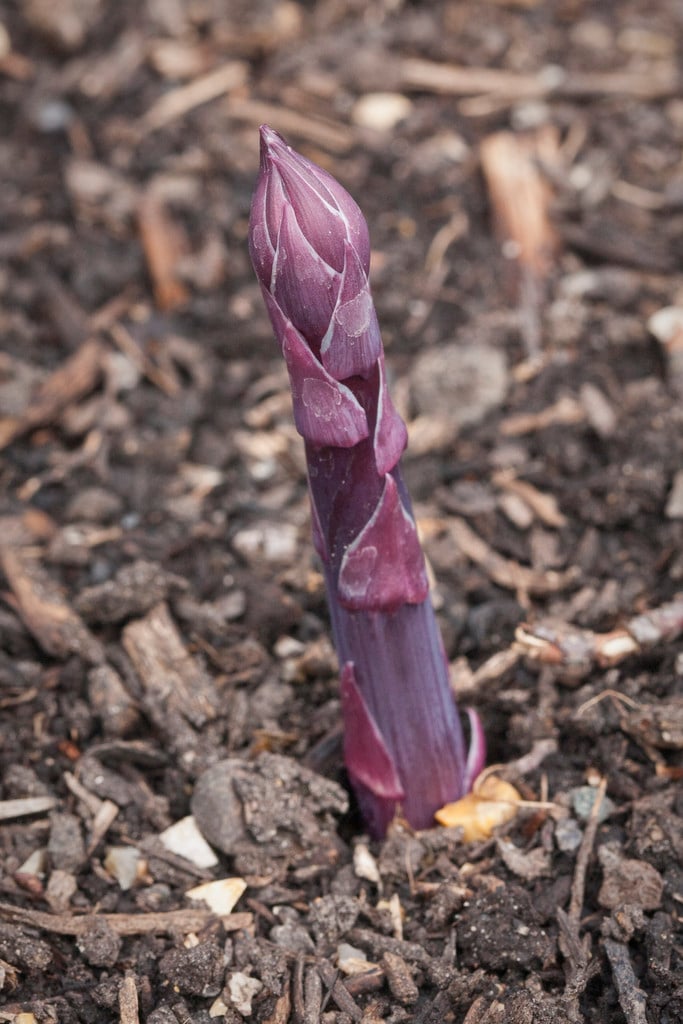Asparagus officinalis 'Stewart's Purple'
An upright, clump-forming perennial grown for its edible, rich dark purple shoots, known as spears, harvested from mid-spring to early summer. Once cropping has stopped, tall, branching stems develop with airy, feathery, mid-green foliage, 1.5 x 1.5m. Small, inconspicuous, green and white flowers may be followed by sparse red berries

Buy this plant
Size
Ultimate height
1–1.5 metresTime to ultimate height
2–5 yearsUltimate spread
1–1.5 metresGrowing conditions
Moisture
Well–drainedpH
Alkaline, NeutralColour & scent
| Stem | Flower | Foliage | Fruit | |
| Spring | Purple | |||
|---|---|---|---|---|
| Summer | Green | |||
| Autumn | Green | |||
| Winter |
Position
- Full sun
Aspect
South–facing or West–facing
Exposure
Sheltered Hardiness
H4Botanical details
- Family
- Asparagaceae
- Native to GB / Ireland
- No
- Foliage
- Deciduous
- Habit
- Bushy, Columnar upright
- Potentially harmful
- The young shoots (spears) are edible when cooked. Wear gloves for picking spears as they may a cause skin allergy. Fruits are harmful if eaten
- Genus
Asparagus can be evergreen or deciduous perennials or subshrubs, sometimes climbing, with tuberous rootstock. Stems bear both inconspicuous scale-like leaves and larger, leaf-like phylloclades, with small white or pinkish flowers followed by red berries
- Name status
Accepted
How to grow
Cultivation
Grow in well-drained soil, or a raised bed, in a sunny position. See Grow your own asparagus
Propagation
Propagate by crowns. Although propagation by seed is possible, it is not advisable as seedlings take longer, and may not be male cultivars which produce better plants
Suggested planting locations and garden types
- Wildlife gardens
Pruning
Cut foliage down to ground level once it yellows in autumn
Pests
May be susceptible to asparagus beetle, slugs and snails
Diseases
May be susceptible to foot and root rots and violet root rot
Get involved
The Royal Horticultural Society is the UK’s leading gardening charity. We aim to enrich everyone’s life through plants, and make the UK a greener and more beautiful place.